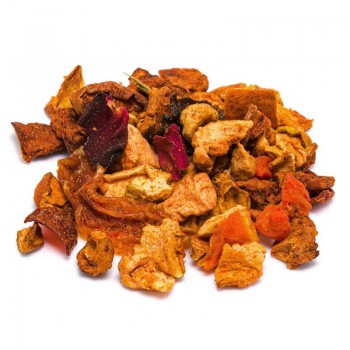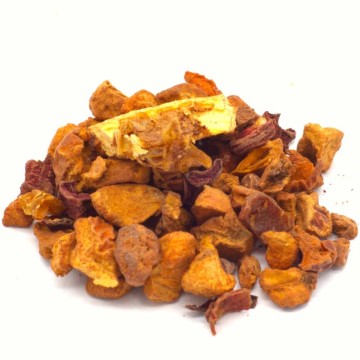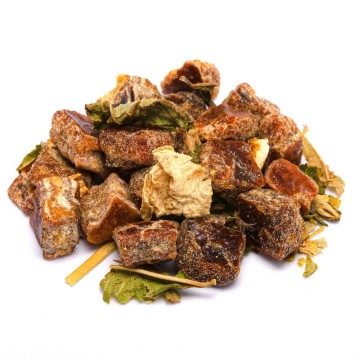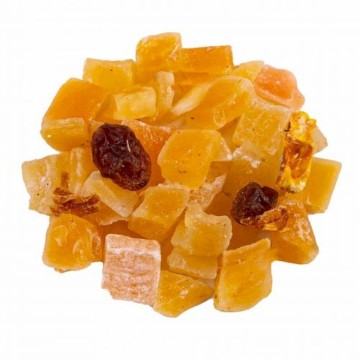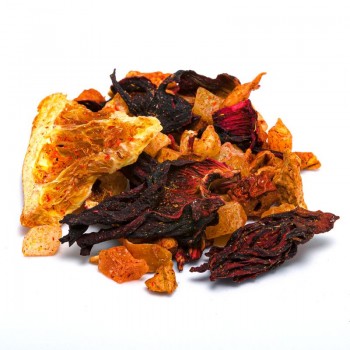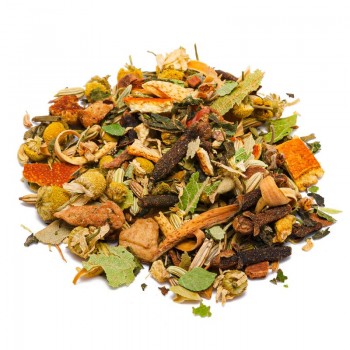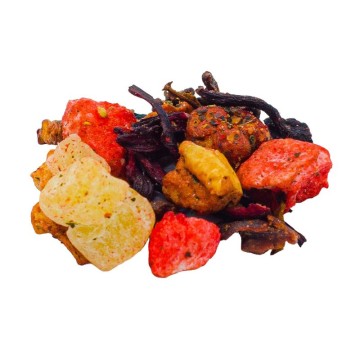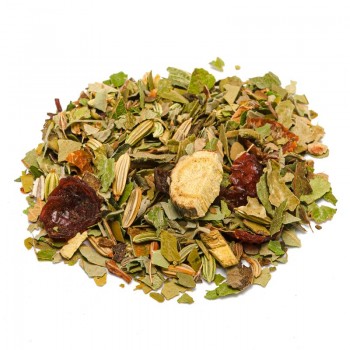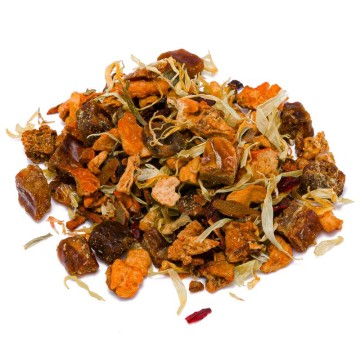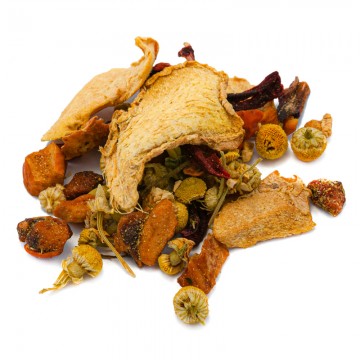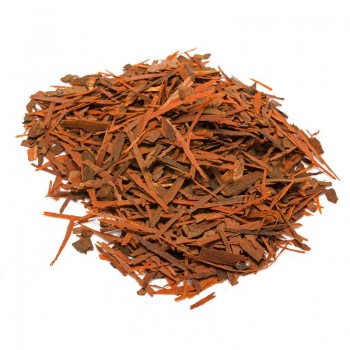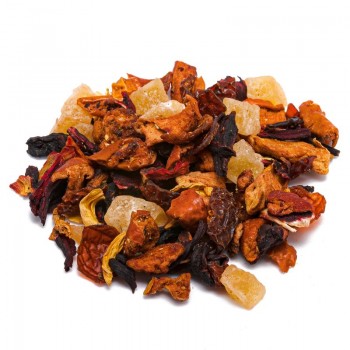The complex and fresh flavor combines fruity and citrusy components with pungent, warm spices and a touch of star anise. A light and pleasant blend is born, with vegetal notes that evoke citrus fruits, and fade into sweetness between the cocoa peels, the pear and the rose buds. The infusion is suitable for any season but becomes excellent hot, recalling autumn and winter aromas.
Ginger, cinnamon and grapefruit infusion: properties and benefits
This blend has antioxidant qualities that promote our well-being thanks to the presence of substances and minerals present in the various ingredients. Furthermore, the combination is designed for a detoxifying and metabolism-stimulating action, an excellent reason to taste this infusion.
The spices contained stimulate circulation, simultaneously promoting digestion and regular gastrointestinal motility. Ginger is one of the best-known spices in the world, not only for its gastronomic versatility, but also because it has many properties and compounds that bring benefits to the body. One of the reasons this food has gained notoriety in recent years is because it acts as a great ingredient for people trying to lose weight healthily. Its purifying effect during the digestive phase combines with its ability to stimulate correct blood circulation.
The combination of cinnamon and ginger is able to accelerate the metabolism and improve the body's ability to metabolism carbohydrates and burn fat. The essential oil contained in cinnamon (cinnamaldehyde) is useful for acting on fat cells, stimulating the fat burning process.
In addition to oxidation (fat burning effect), spices enhance carbohydrate metabolism, also burning more calories. An effect also enhanced by elements such as cocoa peels, which stimulate the activity of the metabolism while also supporting good mood. Furthermore, the combination of the ingredients of the infusion increases satiety and counteracts the feeling of hunger. This combination also promotes the purification of the body, again for the purposes of a slimming diet. The activity of the detox infusion is supported by both cinnamon and lemon in combination with lemongrass and rose buds. Various components such as ginger, cinnamon, apple and pear help regulate digestive activity and counteract nausea, while ginkgo promotes microcirculation. Vervain and rose balance stimulating ingredients with relaxing qualities, as well as being useful for digestive function. Furthermore, the spices contained in the infusion can help calm the effects of coughs or colds, in the hot infusion for the well-being of the nose and throat.
Origins and history of cultivation
The ginger plant is believed to come from Asia, although the origins are uncertain. It is likely that in ancient times the Indians and Chinese cultivated ginger for its tonic root, which had therapeutic as well as nutritional properties. The root, or rather the rhizome, contains an oleoresin rich in many bioactive components, such as gingerol - the main ingredient that gives the pungent taste. Ginger has been present in human nutrition for over 5,000 years and today the plant is cultivated in all humid tropical climates, with India representing the largest producer.
Cinnamon is a spice obtained by drying the internal bark of various trees of the Cinnamomum family, of which the most common is Ceylon cinnamon (now Sri Lanka), i.e. Cinnamomum zeylanicum
It gives a very characteristic sweet aroma and pungent flavour, used throughout the world in sweet and savory foods and in teas. It has been known since ancient times, and is mentioned in Chinese writings from 2800 BC. Curled bark is commercially available, after drying, which creates the stick shape by which we know it.
Fruits and flowers
The cinnamon tree is the Cinnamomum zeylanicum, of the Lauraceae family. Its bark yields the aromatic properties that create the spice. It grows in moist, well-drained soil, and reaches about 15 meters in height.
The apple plant is Malus domestica and belongs to the Rosaceae family. It is a tree native to Asia, now widespread throughout the planet. The fruits are diversified by the many varieties in colour, pulp and size.
A reed-like herbaceous tropical plant, ginger displays lance-shaped leaves and bears white or yellow flower stalks. In botanical name it is Zingiber officinale of the Zingiberaceae family. It grows best in well-drained soil, as the rhizomes used for the spice do not like waterlogged soil.
The pear plant is Pyrus communis, which in the wild version has given rise to the cultivated pear which usually corresponds to Pyrus communis sativa. The plant varies in height from 5 to 30 meters and is very resistant to drought and cold.
The Rose is a perennial plant of the Rosaceae family, of which there are over three hundred species. It can appear in the form of erect shrubs, climbing, thorny or not. The flowers change shape according to the size and color varieties from white to yellow and red.
The Ginkgo biloba tree is one of the oldest known species on the planet, the only survivor of the Ginkgoaceae family. It reaches a height of 30–40 m, leaves and structures that are similar to flowers (absent in the plant).
Star anise has the botanical name of Illicium verum, and belongs to the Illiciaceae family. It gives an important star-shaped spice via the fruit pods. It is native to China, shows a 4-5 meter tall shrub with white bark and large flowers.
The lemon comes from the evergreen tree Citrus limon, of the Rutaceae family. They grow best in tropical climates characterized by heat and humidity, while they are very sensitive to cold. Today we find over 20 different types of lemons grown around the world, generally with small white flowers and fruits that appear between late summer and early autumn.
Lemongrass comes from the Cymbopogon nardus plant belonging to the Poaceae family. It is a cross between a scented geranium and lemongrass, native to South Asia. It shows long, intense green leaves and grows up to approximately 2 metres. It is also used for the production of lemongrass oil.
Cocoa husks derive from the tropical plant Theobroma cacao L. (Sterculiaceae) of the Malvaceae family. It grows in hot and very humid climates, and produces oval fruits - elongated pods containing 20 to 60 seeds, covered in a sticky, sweetish white pulp.
Verbena officinalis is a perennial herb of the Verbenaceae family. Shows lobed leaves and unscented, light blue to purple flowers; in some varieties it blooms with pink or white petals. In herbal medicine, the dried flowering plant and leaves are used.
Nutritional values of ginger, cinnamon and grapefruit infusion
Among the active ingredients there are those of ginger such as zingerone and shogaoli and other antioxidants such as cinnamic acid and cinnamaldehyde. Fruit contains various mineral salts such as magnesium, potassium, and iron as well as acids (ascorbic, malic, citric and tartaric acid) and tannins. How to use the ingredients in the infusion The infusion is obtained by placing approximately 3-5 grams of the ginger, cinnamon and grapefruit mixture with water at 100 °C in a cup (250 ml). Leave to infuse for 10 to 12 minutes before drinking. Add honey or sugar, if desired. Ginger, cinnamon and grapefruit infusion: side effects and contraindications To obtain the benefits and avoid unwanted effects it is necessary to respect the recommended doses and not exceed the consumption of the infusion. An excessive dose of the infusion can cause diarrhea, irritation and acidity of the stomach, headache. Furthermore, the presence of ginkgo could interfere with the intake of anticoagulant or antiplatelet drugs; in this case, consult your doctor before taking the product. The use of the product during pregnancy and breastfeeding is not recommended.

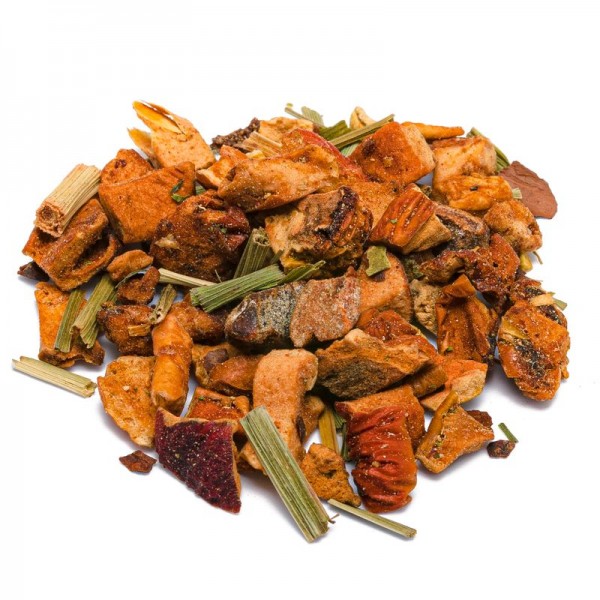









 No reward points for this product.
No reward points for this product.
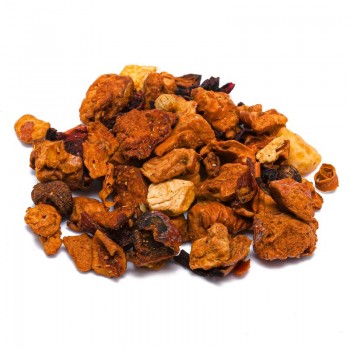
![infuso relax [Natura d'Oriente]](https://www.naturadoriente.com/3555-home_default/infused-relaxation.jpg)
